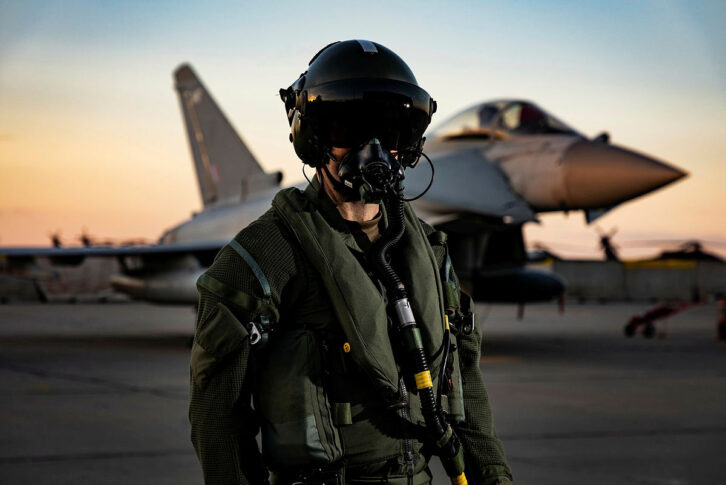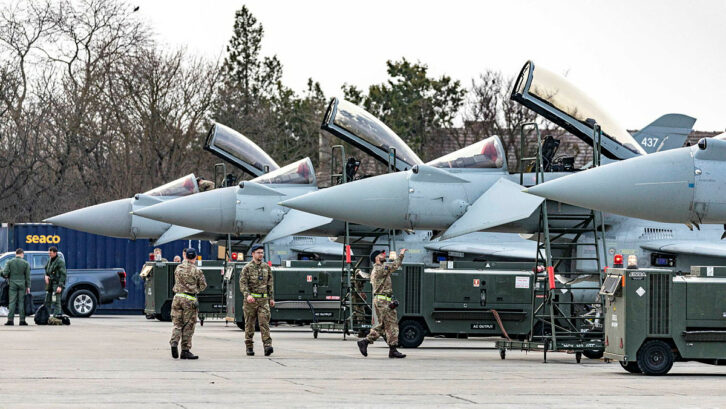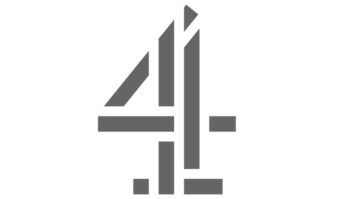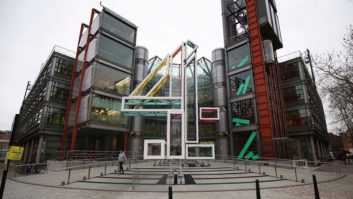The words of the Russian pilot leave no doubt. High above the Black Sea, the crystal clarity of his terse address is chilling, directly addressing the crews aboard three Royal Air Force jets rapidly approaching the Crimean Peninsula: “You have entered a combat zone. If you don’t leave the restricted zone, you will be destroyed.”
Moments later, the British aircraft, a Boeing RC135W Rivet Joint electronic surveillance aircraft and its two Eurofighter Typhoon fighter escorts, are joined by a most unwelcome visitor, as the menacing shape of a Russian Sukhoi Su-27 interceptor roars into view. Fast, agile and bristling with lethal technology, the formidable jet poses a very serious threat. The fighter moves into an aggressive position and the tension ratchets up. Episode 1 of Channel 4’s groundbreaking documentary, Top Guns: Inside the RAF is off to a nailbiting start.

Produced for the broadcaster by Leeds-based True North Productions, the documentary follows the work of the men and women who protect our skies. The second season has just come to a close.
Giving us a valuable insight into the unique challenges of filming cutting edge military technology in often sensitive environments, executive producer Mark Tattersall begins by describing the make-up of the team. “Throughout the production, the size of the team scales up and down depending on our priorities,” he explains. “In terms of filming, we had 4-6 people on the ground working between RAF Coningsby and RAF Waddington, with another 2–4-person team at RAF Akrotiri [the air force’s Permanent Joint Operating Base in the eastern Mediterranean].”
“They are supported by a much bigger team at True North, who oversee and ‘run’ the production. In total, around 70 people were involved in making the series, and we tried to ensure we had a team that was both highly skilled and highly diverse.”
Filming took place between February and August last year, although Tattersall explains the majority was completed by June. “Filming could be day or night in any of our locations as we follow patterns of life in the RAF and frontline military operations.” he says.
The first series debuted in 2023 and brought widespread praise. The team gained invaluable experience, which Tattersall confirms was put to good use this time around. “Access was only granted to us on the back of a considerable track record of successfully navigating operational security challenges,” he says.
“With around 40+ hours of observational documentary storytelling behind us, we managed to convince the RAF that we had both the knowledge and experience for how to approach some of the sensitive storylines and locations. Getting the final approval required patience and persistence, and a lot of help from the RAF too! Our ambitions were to build on the success of Series 1 and go further, but that meant new risks and new workflows to manage them.”

The series showcases many of the myriad roles needed to keep the service airborne, following the work of ground crews as well as the fliers. A range of equipment was needed to meet the various requirements of the different aspects shown on screen. “Our main film cameras on the ground were Sony PXW-FX9s,” says Tattersall. “Combined with prime lenses, they gave the team the control and flexibility for long days and challenging environments.
“In the cockpit, the RAF holds all the keys for cameras and microphones. It takes many months of experimentation and rigorous safety checks to ensure the pilots are always safe. It’s a ‘one size fits all’ approach, so if a camera is deemed safe for training, then it must also be safe for frontline operations or even if a pilot needs to eject.”
And, of course, it isn’t just the military that has a need for operational security. “The workflow we created to get cockpit pictures and audio took many months to establish, so we’re keeping that secret for now!” he adds.
VFX use was kept to a minimum, with real footage preferred to keep the audience “in the moment.” Maps are the only device inserted, providing context for the audience. 4K shooting was the preference, says Tattersall, “We shoot in 4K wherever possible to future-proof our rushes. Some of the RAF’s own camera systems aren’t quite at that resolution though!”
With European conflict ongoing and temperatures unfortunately rising across a number of the world’s flashpoints, the need for absolute security remained paramount throughout the entire process. Not unexpectedly, the True North team has a healthy respect for such critical matters, working with the service to ensure content was carefully handled.
“Getting additional footage from the RAF was a huge challenge when we began to make this series,” Tattersall explains. “Understanding what can be recorded and how to unlock it required a huge effort, and we’ve very grateful to the RAF for their assistance. A combination of high-level security clearances and secure editing areas meant that we could collate all of the footage we needed to bring the audience into the cockpit. Knowing what to redact, and how to remote it, was essential before we could take rushes into the edit, where extra care needs to be given to control the cuts until they’re signed off for transmission.”
This reality proved testing for the True North team. “Undoubtedly, filming frontline operations and in classified areas presents the biggest challenge on this production. It’s never as simple as turning up and filming! We must know how to navigate around national security concerns before the cameras roll – and have the approvals in place by all the stakeholders across UK Defence.”
However, operating in such demanding conditions also brought a lot of standout moments as Tattersall explains. “There are too many to mention! Being the first to unlock UK Reaper drone missions; seeing Typhoons shoot down Iranian missiles & drones; capturing the fallout from the death of an RAF pilot [Squadron Leader Mark Long was tragically killed in an accident while flying a Battle of Britain Memorial Flight Spitfire aircraft in Lincolnshire] and following pilots as they’re ordered to drop bombs on Houthi missile sites in Yemen all stand out for being both immensely challenging and professionally rewarding to capture.”

Throughout the process there were “Lots of hairy moments,” Tattersall continues, stressing the importance of building strong connections. “Military access is often an ongoing conversation, and it’s important to maintain good relationships for when you need some help.”
Echoing the success of the original broadcast, series 2 has been exceptionally well received. Tattersall ponders what might be coming next for the talented team behind it. “Firstly, a well-deserved rest! Programmes like this take a year to make, and we’re speaking to broadcasters about where to go next. Watch this space…”
And the opening Black Sea encounter? The situation was successfully de-escalated, with all aircraft and personnel safely returning to base.
- This article originally appeared in the April issue of TVBEurope, which is available to download here






